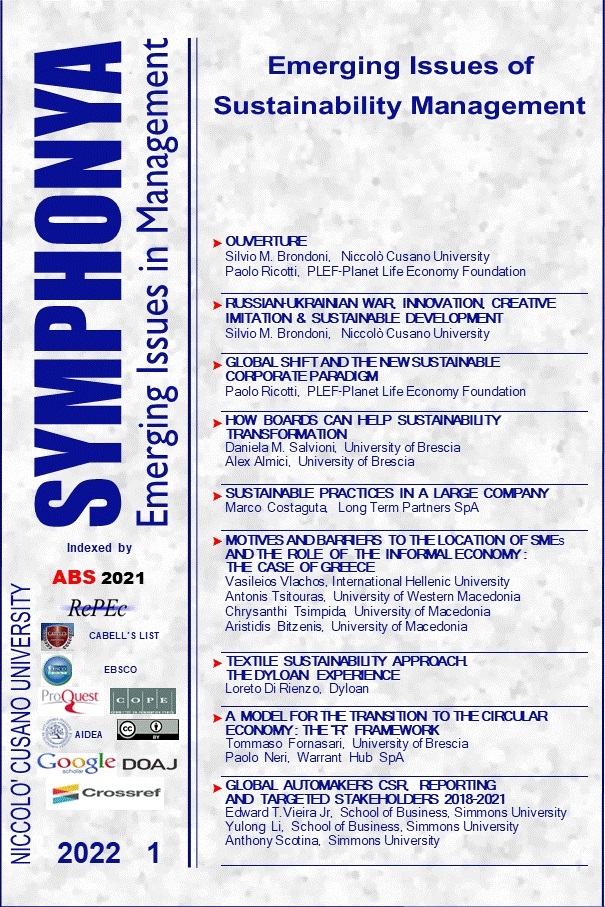A Model for the Transition to the Circular Economy: The “R” Framework
DOI:
https://doi.org/10.4468/2022.1.08fornasari.neriKeywords:
Circular Economy; R Framework; Sustainability; EU Taxonomy for Sustainable Activities; Global MarketsAbstract
The relevance of circular economy has significantly grown in the last years, thanks to the spread of sustainability principles among companies, policy makers and practitioners. The European Union has given an important impulse the dissemination of circular economy in business practice, with the introduction of the Regulation on taxonomy for sustainable activities. It is a regulation for the classification of sustainable economic activities, aimed at creating a common language for investors, which favour ventures that have a significant positive impact on the climate and the environment. Starting from the theoretical background offered by the so-called “R” Framework, the paper attempts to close the gap between scholars and practitioners, providing real cases of implementation of circular economy.
Published
Versions
- 31-07-2022 (2)
- 31-07-2022 (1)
How to Cite
Issue
Section
License
Copyright (c) 2022 Symphonya. Emerging Issues in Management

This work is licensed under a Creative Commons Attribution 4.0 International License.
The authors retain all rights to the original work without any restrictions.
License for Published Contents

You are free to copy, distribute and transmit the work, and to adapt the work. You must attribute the work in the manner specified by the author or licensor (but not in any way that suggests that they endorse you or your use of the work).
License for Metadata

Symphonya published articles metadata are dedicated to the public domain by waiving all publisher's rights to the work worldwide under copyright law, including all related and neighboring rights, to the extent allowed by law.
You can copy, modify, distribute and perform the work, even for commercial purposes, all without asking permission.



